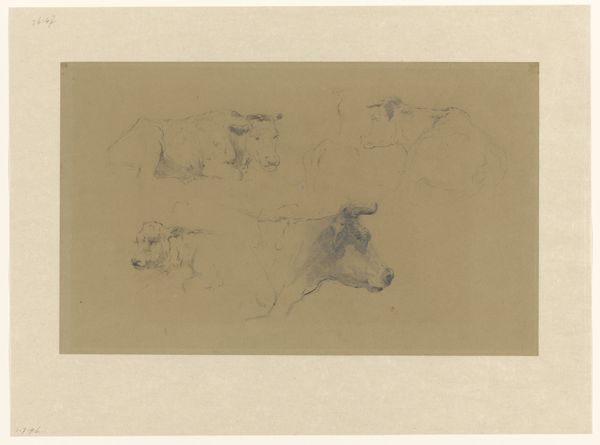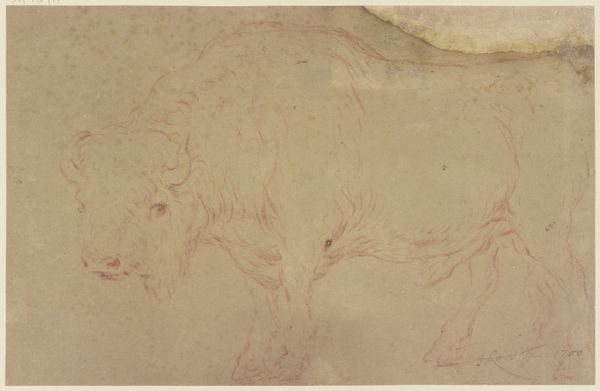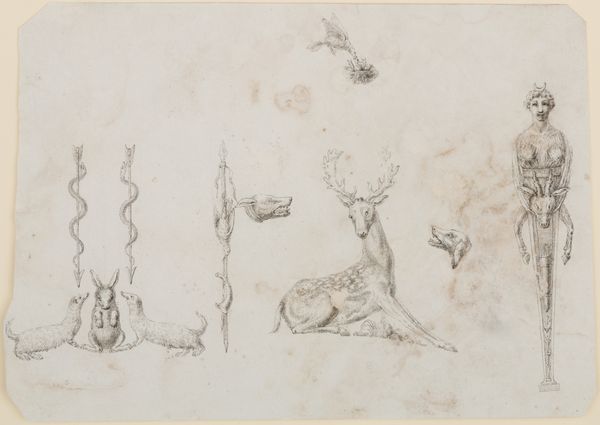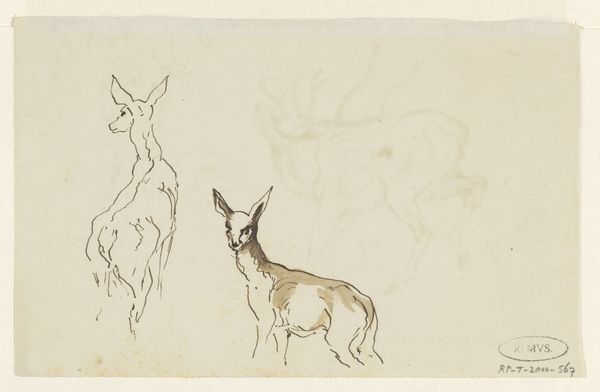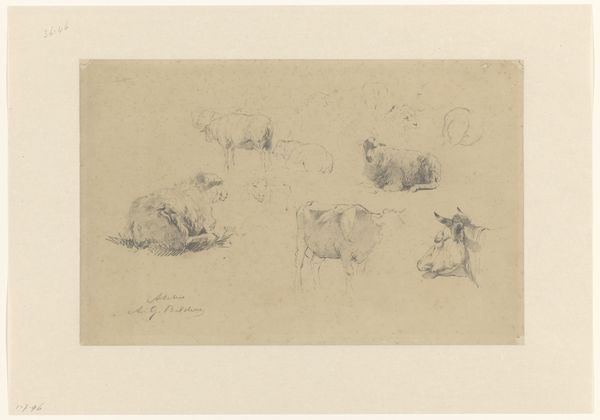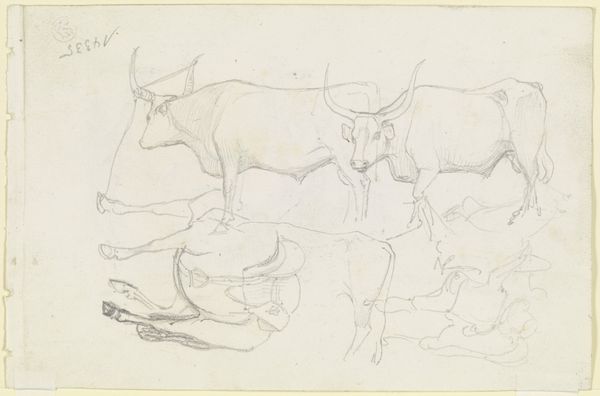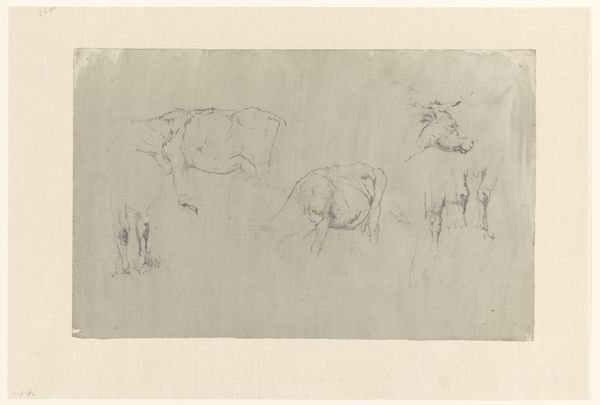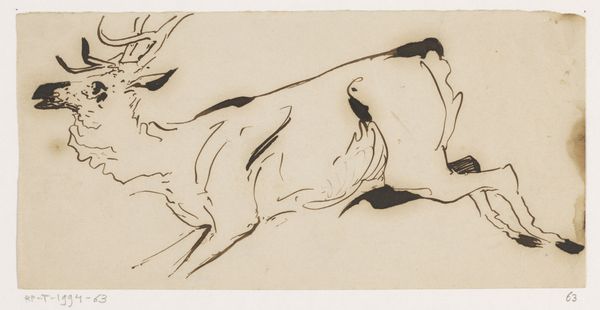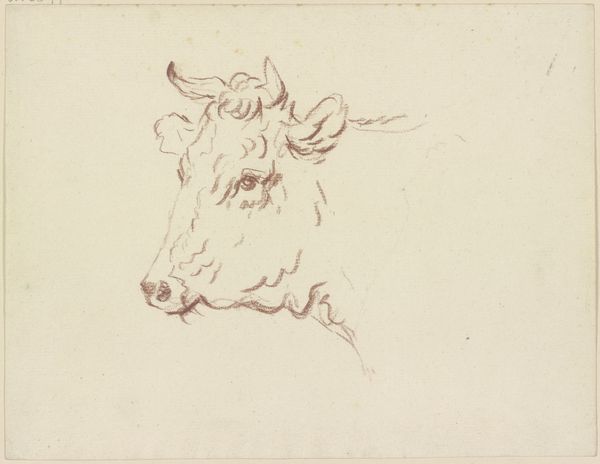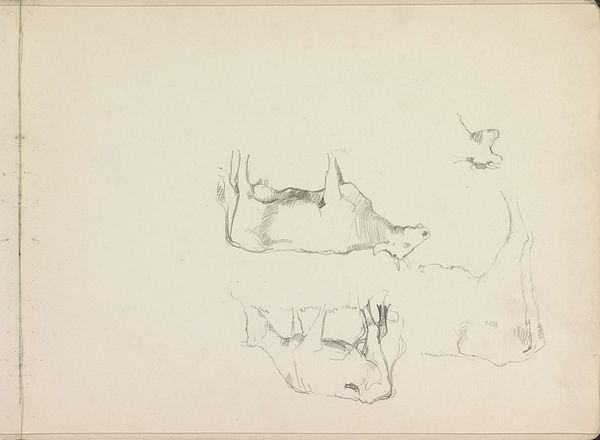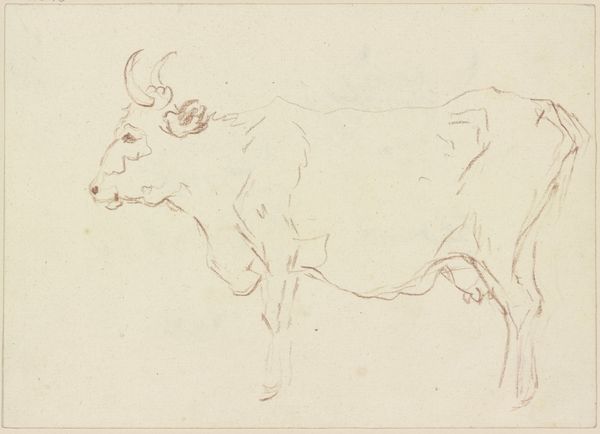
Studier af stående okse, en okses bagben og hoved 1845
0:00
0:00
drawing, pencil, graphite
#
portrait
#
drawing
#
pencil
#
graphite
#
academic-art
#
realism
Dimensions: 201 mm (height) x 271 mm (width) (bladmaal)
Johan Thomas Lundbye created this pencil drawing, “Studies of a Standing Ox, an Ox’s Hind Legs and Head,” around 1845. Lundbye was part of the Danish Golden Age, a time when artists turned to the local landscape and rural life for inspiration. In this sketch, the ox isn't just an animal; it embodies the values of agrarian society, a society then undergoing rapid change. The detailed focus on the ox's head and powerful legs suggests an appreciation for the animal's strength and its role in agricultural labor. Denmark in the mid-19th century was predominantly an agricultural society, and artists like Lundbye played a role in shaping national identity. They did this by idealizing rural life in the face of industrialization and urbanization. To fully understand this drawing, we need to look at agricultural practices, folk traditions, and the art institutions of the time. Such research reveals how artists both reflected and shaped the cultural values of their era. Art always exists within a specific social and institutional context.
Comments
No comments
Be the first to comment and join the conversation on the ultimate creative platform.
